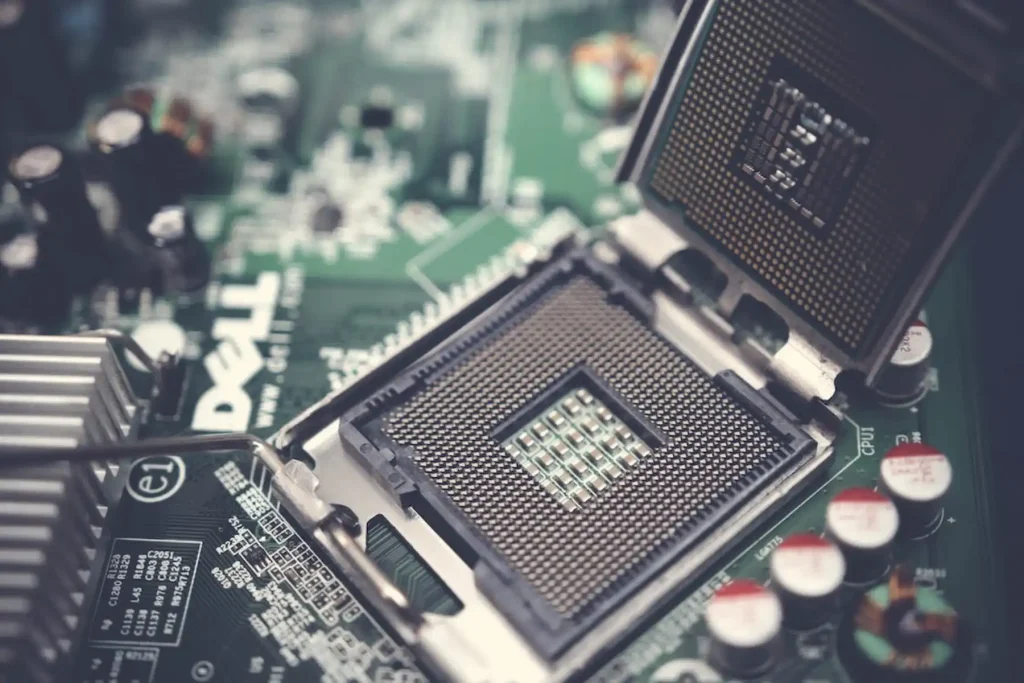Computer hardware is vital to the success of any business, so much so that it still accounts for the largest portion of total tech spending within businesses, at 30% of overall IT budgets. If your computer hardware is starting to feel a little sluggish and slowing down your business processes—it is time for a hardware upgrade.
Prior to shopping for new equipment and hardware, you must prepare a few things. In this blog post, we’ll walk you through everything you need to know about upgrading your business’s hardware from start to finish.
By the end, you’ll be ready to tackle this project with confidence!
How Technology Upgrades Benefit Your Business
Investing in a hardware upgrade is an important way to ensure that your business can operate with the most up-to-date technology.
Upgrading your computer hardware will provide the latest software and increase computer processing abilities, allowing for increased efficiency and better performance.
A hardware upgrade may also allow you to obtain faster internet speeds, enhance network connections, and other operating systems, leading to improved connectivity and collaboration.
Some of the latest hardware features could also help your business save on costs by reducing energy consumption and improving storage capacity.
All in all, investing in a hardware upgrade can be an important step towards improving the overall efficiency of any business.
How To Upgrade Hardware: Step-by-Step

Image Credit: Pexels
1. Research What Type of Hardware Upgrade Your Business Needs
When researching what upgrade hardware your business needs, consider the long term goals of your company.
Does the technology upgrade you are looking at today better support those goals? It is important to upgrade computer hardware when needed, although it can be a difficult decision if you know your upgrade isn’t going to pay off until certain objectives have been met.
Look into options that won’t require upgrading technology too often and will deliver value for years to come. While researching, double-check with third-party resources that the upgrade is worth it for what you are asking your business to do.
Last but not least, consider how your end users interact with the new and improved system, how an upgrade might affect them, and what they need out of a software update or technology upgrade to make their job easier.
2. Find a Reliable and Reputable Supplier
In the event that your business needs to upgrade computer hardware, a dependable supplier will help ensure products are made correctly and delivered on time—both of which are important factors in making the process run smoothly.
In looking for an IT partner to upgrade your computer hardware, consider how they will help you meet your strategic goals. For all your operations to succeed, you need an effective plan.
Providers like Attentus Technologies offer Engineering and IT Procurement project scoping at no added cost—helping your small business map the complex steps necessary to replace your existing hardware and software that will complement your growth objectives over time.
Stop Paying Market Prices…
Get cutting-edge hardware at the most competitive prices
3. Establish a Plan to Upgrade Computer Hardware
According to a recent Microsoft survey, 90 percent of respondents said they would consider taking their business elsewhere if a company used outdated technology due to concerns over security, privacy, or user-friendliness.
Luckily, your experienced managed IT provider will walk you through the planning process for your hardware upgrade so you can ensure you create a perfect solution.
Rely on them to help you to answer the following questions regarding a technology upgrade:
- What technology and systems need to be upgraded? (ie. processor upgrade, upgrade your motherboard, memory ram, computer memory, outdated technology, etc.)
- Are they compatible with your computer?
- Does anything need to be newly developed or installed?
- What amount of time, team members, resources, and budget are needed to implement the upgrade process?
- What will the implementation process look like?
- What is the rollback plan?
Your managed IT provider will also be able to help you in backing up your data and establishing a disaster recovery plan, which is an integral part of your upgrade hardware execution.
4. Upgrade Technology and Run Tests
From implementation to testing, your managed service provider (MSP) will walk you through all the necessary elements of completing a seamless technology upgrade.
This will look different for every business, but your MSP can help you test any aspect of your upgraded technology from running simulated software tests to benchmarking performance data.
Key areas to test include:
- Functional, non-functional and technical testing
- Quality assurance testing
- Data integrity testing
- Security testing
- Performance testing
- Theme/design testing
- Browser and device testing
Issue tracking and capturing are essential components of the upgrade hardware testing process. A high level of detail should be provided, a unique identifier should be assigned for tracking, status should be stated, and someone should be assigned to monitor issues until they are resolved.

Image Credit: Pexels
5. Train Team Members For Success
When you upgrade technology within your business, ensure you prepare help files or user manuals, as well as technical documentation that will help your end users succeed with the new hardware upgrade.
Amounts, types, and lengths of training will vary depending on the end-user features and functionality included in your upgraded software.
| Want to continue your research on how your MSP can help your business? Read these additional resources. Cloud Migration Strategy Best Practices Cost of IT Support for Small Business Risks of Bring Your Own Device (BYOD) |
Attentus Tech helps you map out complex and expensive modernization projects so that you can feel comfortable reaching out to us with any questions or plans for future growth free of surprise costs.
Get a free consultation for a hardware upgrade today!

